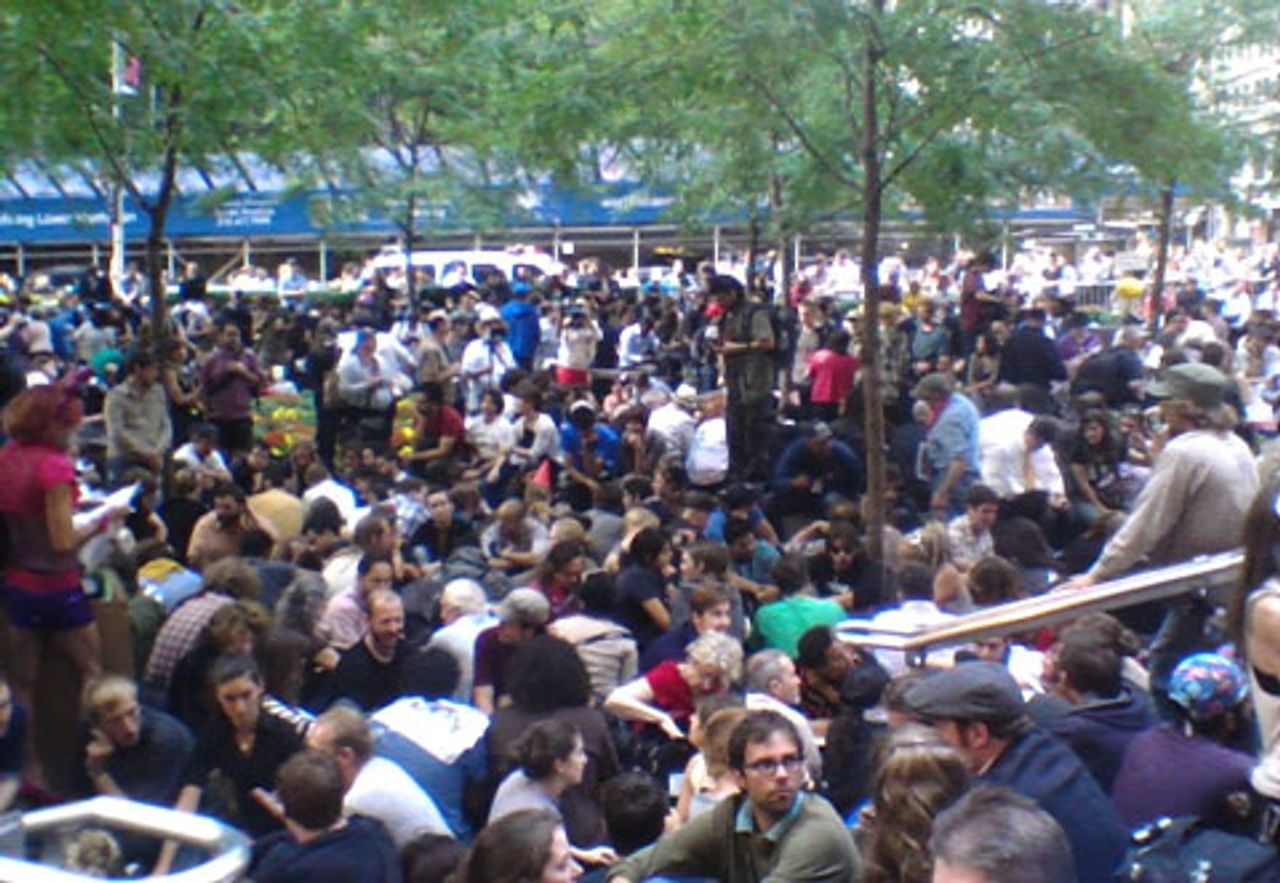The New York Police Department (NYPD) arrested nearly 200 protesters on Monday as they attempted to surround the New York Stock Exchange and block traffic in the city’s financial district.
The police handcuffed and removed at least four people who had joined the protests in wheelchairs.
 Protesters at Zuccotti Park on Monday
Protesters at Zuccotti Park on MondayAt least 25 people were arrested near Washington Square Park in lower Manhattan on Sunday. In some cases, police targeted protesters and bystanders indiscriminately, throwing them to the ground, handcuffing and arresting them.
The protests were a part of a three-day series of events to commemorate the first anniversary of the occupation of Zuccotti Park in New York’s financial district. The Occupy Wall Street protest movement attracted widespread sympathy from ordinary people across the United States and internationally for its opposition to the domination of political and economic life by the Wall Street banks and the wealthiest one percent.
Similar occupations sprang up in hundreds of American cities and towns. Many of the participants were students and ex-students in debt from student loans and unable to find adequately paying work or any work at all.
The response of the local police departments to protesters, who were overwhelmingly peaceful, was, at the behest of both Democratic and Republican politicians, to beat them, arrest them, and subject them to unprecedented surveillance and infiltration.
The NYPD evicted protesters from Zuccotti Plaza on November 15 in a military-style action, cordoning off the entire area and shutting nearby subway stations to prevent supporters from rallying at the site.
Before the arrests this week, some 2,000 people had been arrested in Occupy protests over the previous year, including more than 700 rounded up on the Brooklyn Bridge last October. Several hundred cases are still pending.
Police action was even more overbearing for the Occupy anniversary protest, which involved far fewer participants than last year, with cops often outnumbering protesters in the streets of lower Manhattan.
Announced plans for the protesters to encircle the New York Stock Exchange were foiled by the NYPD effectively occupying the surrounding streets before them, setting up rows of metal barriers and massing mounted police and riot-equipped cops on motorcycles and on foot around the financial center.
When demonstrators broke up into smaller groups marching around lower Manhattan, they were aggressively pursued by the police, who in some cases dragged protesters off the sidewalk and then arrested them on charges such as disorderly conduct.
The police clampdown imposed significant delays on people trying to get to work and being forced to make their way through a maze of police checkpoints and barricades and produce IDs proving that they worked in the area. Some subway service to the area was also halted on the orders of the NYPD.
By late Monday night, a small number of protesters remained in Zuccotti Park, encircled by metal barricades police and private security guards.
Police turned spotlights on the demonstrators. While there were initially no orders to evacuate the area, the NYPD and security for the company that owns the plaza, Brookfield Properties, threatened that any violation of new rules prohibiting the setting up of tents, distribution of food, making noise or bringing in large bags could provoke a police intervention to clear the park.
